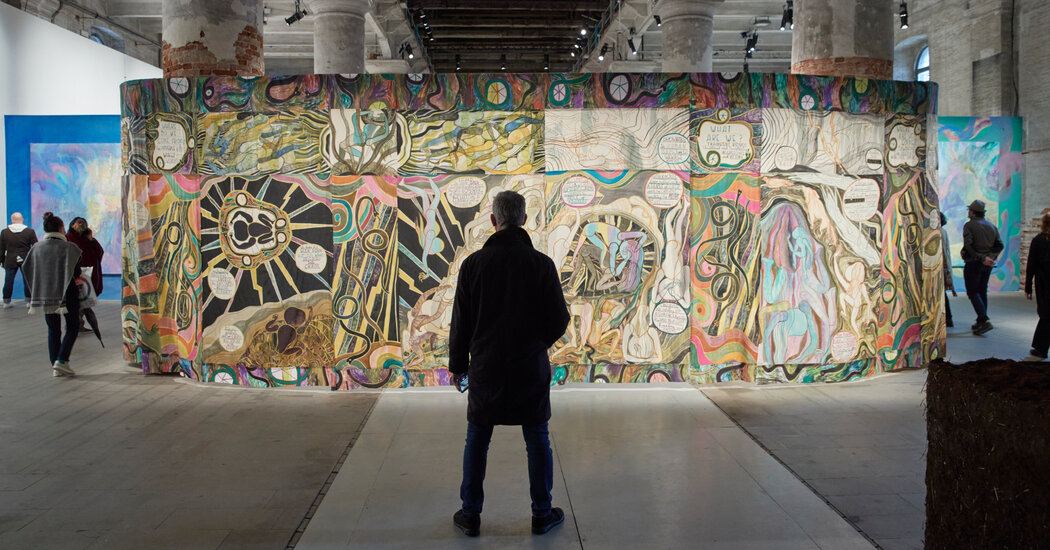VENICE — Since its founding in 1895, the Venice Biennale has become one of the world’s most important venues for contemporary art, attracting hundreds of thousands of visitors to the city for its influential exhibitions and performances.
The event, which this year runs through Nov. 27, keeps Venice at the center of the world’s cultural conversation. More practically, it generates repeat, often overnight visitors that the city prefers to day trippers.
But some of Venice’s rapidly shrinking local population feel that the Biennale, aided by the current city government, is monopolizing space that could be used by locals to create a sustainable, year-round cultural and economic life beyond tourism.
The city’s concession to the Biennale this past March of more space in the Arsenale — a former shipyard whose tall, red brick walls enclosed an industrial operation capable of producing a warship a day — has become entangled in a complicated debate over the future of one of the city’s largest public properties, and, by extension, of the city itself.
“The Arsenale is much, much more than the Biennale,” said Giorgio Suppiej, secretary of the Forum for the Arsenale’s Future, a coalition of more than 60 local groups that has spent a decade lobbying for increased accessibility to the site, and which is suing to block the March decision. (A court is set to hear the case later this month.) The group organized a protest in February before the city’s decision that was attended by hundreds of Venetians, who held signs reading “Arsenale to the City” and “Arsenale Open and Alive All Year.”
The Forum says that the Arsenale’s historic workshops should be dedicated to boatbuilding, rowing groups and the display of traditional watercraft, all of which, it contends, could create jobs while also safeguarding a traditional Venetian way of life.
The Biennale is a “beautiful thing for Venice, let that be clear,” Suppiej said. But it “can’t be a trump card that cuts out things that are even more important,” he added.
The Arsenale, whose 120 acres account for a large chunk of Venice’s historic center, is jointly owned by the City of Venice and the Italian Navy, which still maintains an active base there. The vast complex was all but closed to the public until the Biennale started exhibiting there in 1980. Even now, locals can only enter much of the Arsenale after buying a Biennale ticket for 20.50 euros, or about $21.40. A large part of the…
Click Here to Read the Full Original Article at NYT > Travel…
